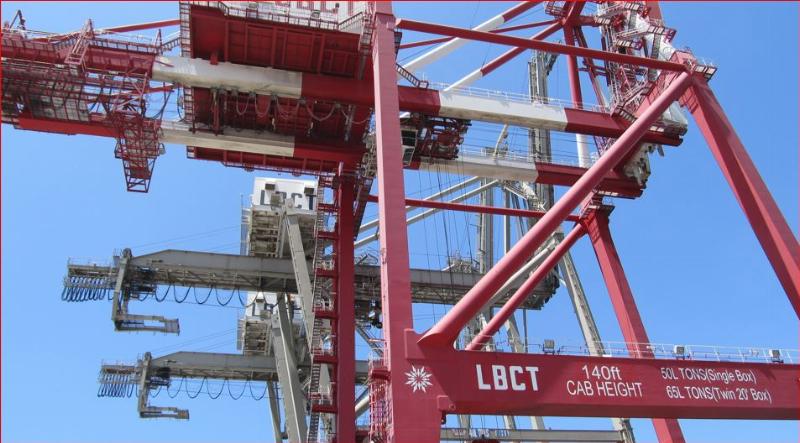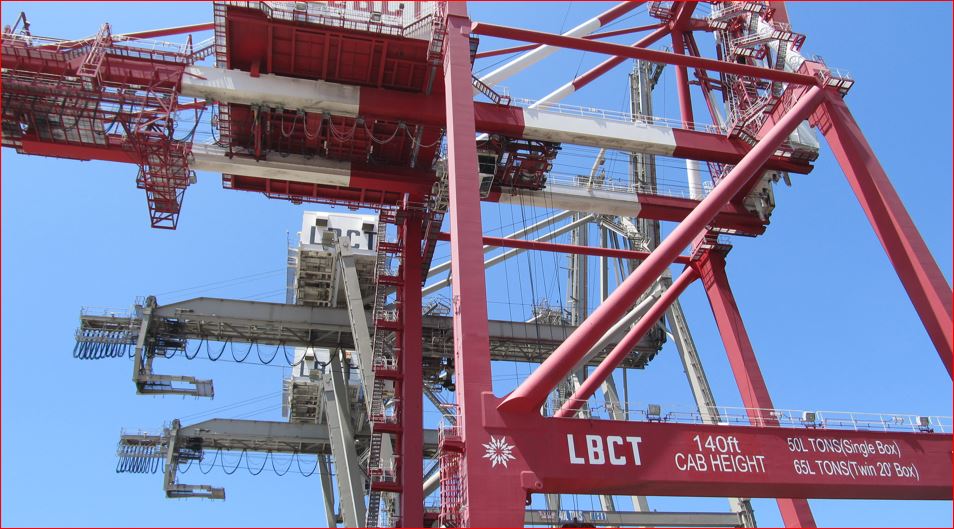

Photo Credit:Port of Long Beach container crane
mmshowalter
Draconian tariff regimes trigger the rise of black and gray markets. There are problems with that ...
The coming new trade paradigm, complete with sky-high tariffs on everything from soup to smartphones could intensify consumer use of two already existing methods of trade.
The first is the counterfeit product market with consumer goods that look and feel exactly like your favorite brand name products, but are actually cheaper copies whose manufacturers have chosen to produce “knock-offs” in countries that don’t respect international patents or are simply not interested in cracking down on such companies or their products.
We’ve all seen the Rolex copies, the Gucci-like bags and even high tech products in big American cities and in the Far East, sold by street hawkers.
Looking the other way can be very lucrative, especially if you’re in the regulatory business and don’t mind pocketing a few tax-free bribes.
The second trading option – the gray market — is one that’s been around for a long time but has not been as profitable until now when, because of the trade war, supplies will be scarce due to smaller production runs and the real worry of import duties eating into importers’ sales.
The gray market is usually comprised of retailers that sell name-brand products that have not been obtained through authorized distributors but purchased from non-authorized purveyors.
An example might be well-known camera stores in New York City that specialize in selling photographic equipment that has been purchased outside of the normal distribution chain that usually starts with bypassing an importer and proceeds to bypassing a distributor. These items are often sold without product warranties, but are offered at significantly lower prices because they have eliminated at least one if not two links in the expensive distribution chain.
“Pssst … wanna buy an iPhone”?
Since the application of President Trump’s higher tariffs on China and China’s reciprocal tariffs on U.S. products we might expect the gray market to grow, rapidly, as importers of products made in China like Apple’s iPhones will be placing limits on their orders until they can predict what will happen with consumer demand.
That begs the question: “Will American consumers care if Chinese-made U.S.-brand products will cost them 30-40% more”? We will soon know the answer to that question, perhaps within a month or so, but we will not know the long-term impact until much later … and it might be too late.
America and the rest of the world could slide into a recession as consumers choose to hang onto their money out of fear or real economic pressures on their personal economies.
If that were to be the case, governments would lose valuable tax revenues, and worst of all, some companies would simply give up, fire massive numbers of workers and later declare bankruptcy.
This would negatively affect the world’s currencies, namely the U.S. dollar, first, perhaps followed by the euro or maybe the yen.
This would be the result of an unholy confluence of economic factors precipitated by the decimation of share values (the world’s companies would take a direct hit because of a lack of investor confidence). The cascade effect would hit mutual funds, pension funds and millions of Americans’ 401(k)s that would be robbed of their value.
Consumer prices would soon rise, even on those items that were not direct imports because of an increased demand for goods produced domestically from producers unable to keep up with demand.
Producers would cite the disparity between supply and demand to justify their price rises. The impact on countries with small home markets and huge export dependencies would be even greater.
Is a world economic crisis the only way to rebalance the scales?
Finger-pointing will accompany emergency financial measures that each country or trading block will undertake to stem their bleed.
The shake-out will determine which countries land on their feet and experience the least amount of pain. Assuming that countries like the United States which are self-sufficient in food and energy production will survive relatively intact, it could leave many others in a situation not unike the Europe of May 1945 when production facilities were destroyed, economies were under water and governments were unable to pay for all the rebuilding (and the imported goods) necessary to return them to profitability.
That leaves an important question: “Would the United States step up to help Europe become a competitive power again”?
Not necessarily. I think the U.S. would want certain concessions and demands of the E.U. that it not return to being a trading bloc but instead concentrate its efforts on strengthening its intra-cultural ties and building an effective pan-European military and that they would accept that the new world trading order be simplified by adopting bi-lateral trading agreements to replace trading blocs.
The Europeans would definitely not be happy with this development as they have spent decades in closing their ranks when it comes to limiting the U.S.’s access to their markets.
Ironically, it was they who used the tactic of putting Europe First, so it is rather disingenous of them to point fingers at Donald Trump for saying exactly the same thing about the U.S.!
Establishment of the New Economic World Trading Council (NEWTC)
If we are able to avoid taking steps to burn down our respective houses of trade in order to save our land (our markets), then there may be hope to finding some solutions that could transform chaos into order and create a truly level playing field for international trade. That could only happen if the players agreed that it was time to do something positive and permanent and then be willing to sit down to create a new system of non-discriminatory bi-lateral agreements.
These agreements would protect the members against the creation of monopolies. They would also protect the growth of certain key industries from the attacks from larger countries outside the NEWTC from dumping their products.
The new trading manifesto would bind the members to good faith bargaining in the case of disputes.
This new council would not totally take the place of the World Trade Organization, but would limit its authority, especially when it comes to adjudicating disputes.
The founding members of the NEWTC would include, the U.S.A., Canada and European nations (including those European countries that may not already be a part of the E.U.). Future members would be admitted on a case-to-case basis, but be required to adhere to the precepts of the new organization.
One of those is to be open to negotiating bi-lateral agreements with NEWTC members and to promise not to engage in creating non-tariff barriers or boycotts as well as cooperate on the establishment of common standards for product safety, etc.
Pointing fingers is not the way forward.
There is no doubt that the world would point its fingers (probably its middle fingers) at America and especially Donald Trump as the ones that started the first World Trade War that effectively robbed nations of their wealth and then had the audacity to solve the problem that it, itself, created!
U.S. authorities must accept those criticisms, but not let themselves be distracted from their goal of rebalancing the trading scales.
We, who are the outside looking in, must do our best to convince those with their hands on the controls to realize that the continuance of a global trade war has dramatic negative consequences and that time is not on our side. With each passing day, the world’s wealth is being steadily drained away. And for developing nations, the consequences are even worse. It is imperative that their development is also part of decision-makers’ discussions.
A new trading paradigm could solve many of the developed and developing world’s most pressing problems, not the least of which is persistent poverty and the impact of the world’s foot-dragging on protecting our physical environment to say nothing of the pressure that unfair trade has on those nations willing to solve problems by going to war.
Stephen Helgesen is a retired career U.S. diplomat specializing in international trade who lived and worked in 30 countries for 25 years during the Reagan, G.H.W. Bush, Clinton, and G.W. Bush Administrations. He is the author of fourteen books, seven on American politics, and has written over 1,500 articles on politics, economics and social trends. He now lives in Denmark and is a frequent political commentator on Danish media. He can be reached at: [email protected].
Image: Monica Showalter, by permission






